Hash Function Demonstrator
Blockchain uses hash functions to create a unique digital fingerprint for each block. These hashes are used to verify data integrity and prevent tampering.
Result: A single character change creates a completely different hash.
This demonstrates how hash functions prevent tampering in blockchain.
How this works: SHA-256 takes any input and creates a 64-character hash. Change one character in the input, and the entire hash changes completely. This is why blockchain is secure - altering one block changes all subsequent hashes.
Blockchain doesn't work because it's fancy. It works because it's cryptographic encryption. Without it, blockchain is just a shared spreadsheet. With it, it becomes an unbreakable ledger that trusts no one but still keeps everyone honest.
Why Cryptography Is the Heart of Blockchain
The word "crypto" in cryptocurrency doesn't come from "crypt" or "secret society." It comes from cryptography - the science of hiding and protecting information. When Satoshi Nakamoto launched Bitcoin in 2009, the real breakthrough wasn't digital money. It was solving the double-spending problem without a bank. And the only tool that could do that? Cryptography.Think of it this way: if you send $10 to a friend, a bank verifies it. But in blockchain, there's no bank. Instead, math does the job. Complex math. Math that makes it nearly impossible to fake, alter, or reverse a transaction after it's recorded.
That’s where cryptographic encryption comes in. It’s not just about locking data. It’s about proving ownership, verifying identity, and guaranteeing that once something is written, it can’t be changed. That’s the core promise of blockchain - trust through math, not middlemen.
The Three Pillars of Blockchain Encryption
Blockchain encryption doesn’t rely on one trick. It uses three tightly connected cryptographic tools that work together like gears in a watch.1. Hash Functions: The Digital Fingerprint
Every block in a blockchain has a unique fingerprint - a hash. This isn’t just any code. It’s a fixed-length string of letters and numbers generated from the block’s data using a one-way mathematical function. Bitcoin uses SHA-256, which turns any input - whether it’s a sentence or a gigabyte of data - into a 64-character hash.Here’s what makes hashes powerful:
- Same input = same hash every time.
- Change one letter in the input? You get a completely different hash.
- You can’t reverse-engineer the original data from the hash.
This is why tampering is so hard. If someone tries to change a transaction in Block 127, the hash of that block changes. But Block 128 contains the hash of Block 127. So now Block 128’s hash is wrong. And so is Block 129’s, and so on - all the way to the latest block. To fake one change, you’d have to recalculate every single block after it. On a live network like Bitcoin, that’s impossible with today’s computers.
2. Asymmetric Cryptography: Public and Private Keys
You don’t need a password to spend your Bitcoin. You need a private key. And that key is part of an asymmetric encryption system - meaning there are two keys: one public, one private.Your public key is like your bank account number. You can give it to anyone. They can send you cryptocurrency. Your private key is like the password to that account. Only you should have it. If you lose it, you lose access. If someone steals it, they own your coins.
Here’s how it works in practice:
- You sign a transaction with your private key.
- The network uses your public key to verify the signature.
- If the math checks out, the transaction is approved.
No one else can sign for you. Even if someone knows your public key, they can’t guess your private key. The math behind it - usually Elliptic Curve Cryptography (ECC) - makes it computationally infeasible. We’re talking billions of years of computing time to crack a single key.
3. Digital Signatures: Proof You Did It
A digital signature isn’t a picture of your handwriting. It’s a mathematical proof that you authorized a transaction. It’s created by combining your private key with the transaction data.When a node on the network receives your transaction, it runs a quick check: "Does this signature match the public key and the transaction details?" If yes, it’s valid. If no, it’s rejected.
This is what prevents fraud. You can’t say, "I didn’t send that." Because the signature proves you did - and only you could have made it. This is called non-repudiation. It’s a legal-grade guarantee baked into the code.
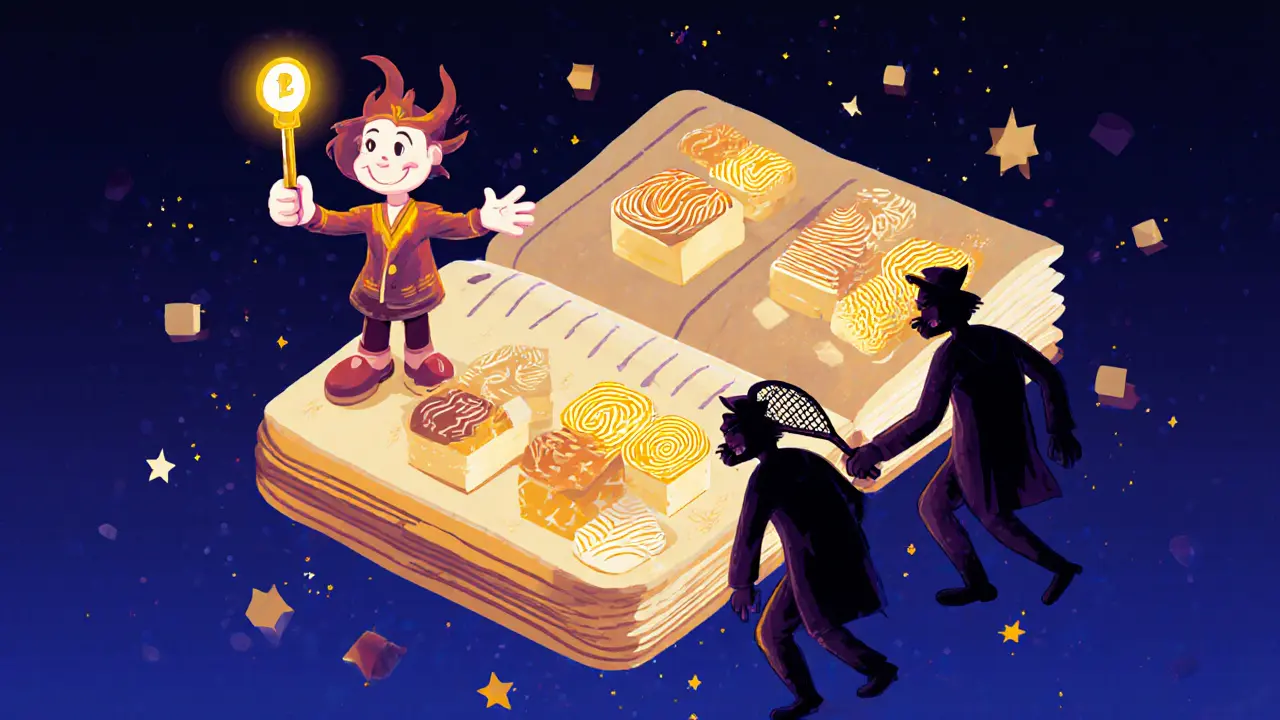
How Blockchain Encryption Differs from Traditional Systems
In a bank’s database, data is stored in one place. If someone hacks the server, they can change balances, delete records, or copy everything. That’s centralized control - and a single point of failure.Blockchain flips that. Data isn’t stored in one place. It’s copied across thousands of computers. And every piece of data is locked with cryptographic hashes and digital signatures.
Here’s the difference:
| Feature | Blockchain Encryption | Traditional Encryption |
|---|---|---|
| Data Storage | Distributed across many nodes | Centralized (servers, cloud) |
| Alteration | Nearly impossible after confirmation | Easy if you have admin access |
| Ownership Proof | Private key = ownership | Username/password or ID verification |
| Trust Model | Trustless - relies on math | Trust-based - relies on institutions |
| Speed | Slower due to consensus and hashing | Faster for internal transactions |
Blockchain encryption trades speed for security. It’s not meant for real-time stock trades. It’s meant for records that must last decades - contracts, titles, supply chain logs, voting records.
What Can Go Wrong? The Real Risks
Cryptographic encryption is strong. But the system around it? Not always.Most blockchain hacks don’t break the math. They exploit people.
- Lost private keys: People forget passwords. They lose USB drives. They send keys to phishing sites. Once the key is gone, the coins are gone forever.
- Weak key storage: Keeping private keys on an internet-connected phone or computer is risky. Hardware wallets (like Ledger or Trezor) are far safer.
- Smart contract bugs: Code on the blockchain can’t be edited. If there’s a flaw in the code - like a漏洞 in a DeFi app - attackers can drain funds. The encryption works, but the logic doesn’t.
- Quantum computing threat: Future quantum computers could break ECC and RSA encryption. SHA-256 hashing is more resistant, but not immune. Researchers are already working on quantum-resistant algorithms like lattice-based cryptography.
The lesson? The math is solid. The human side isn’t.
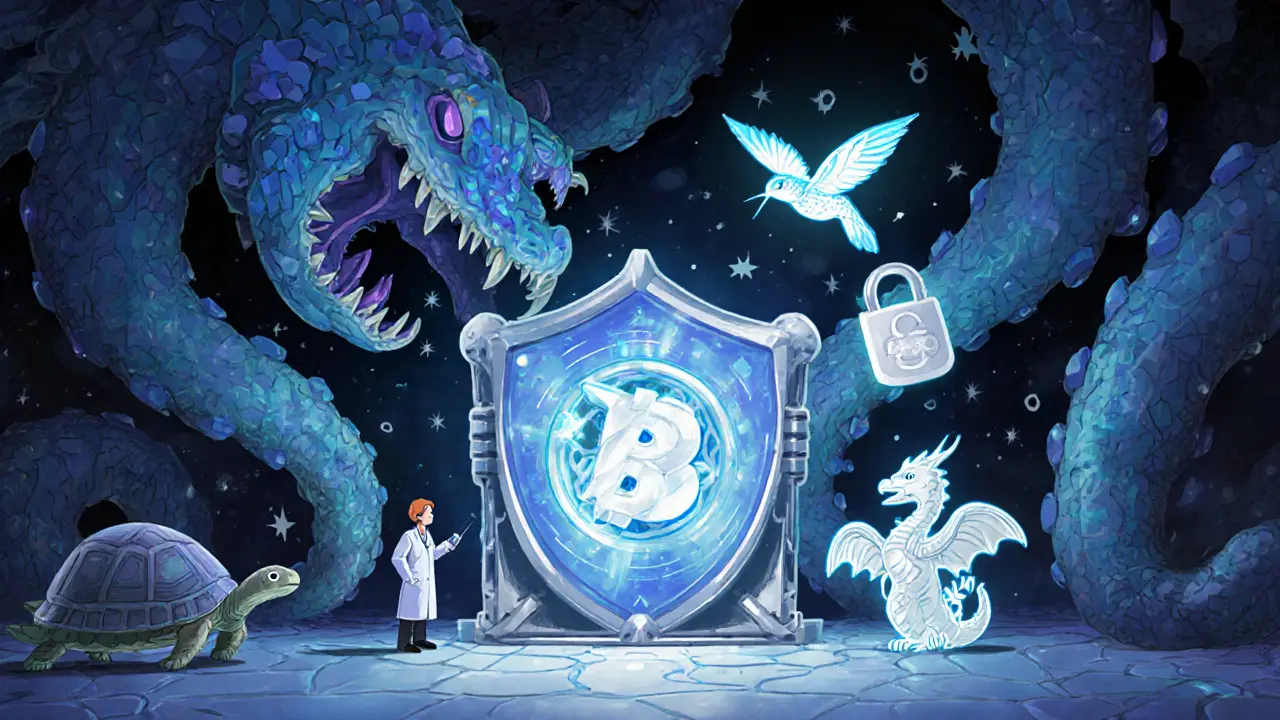
What’s Next for Blockchain Encryption?
The field is evolving fast. Here’s what’s coming:- Zero-knowledge proofs (ZKPs): These let you prove you know something (like a password) without revealing it. ZKPs are already used in privacy-focused blockchains like Zcash and are being added to Ethereum to make transactions private but still verifiable.
- Post-quantum cryptography: NIST is finalizing new encryption standards that will survive quantum attacks. Expect to see these integrated into enterprise blockchains by 2027.
- Multi-signature wallets: Requiring 2, 3, or even 5 keys to approve a transaction reduces the risk of single-point theft. Used by institutions and high-value holders.
- Hardware security modules (HSMs): These are tamper-proof devices that store keys offline. Used by exchanges and custodians to protect billions in assets.
Blockchain encryption isn’t standing still. It’s getting smarter, more private, and more resilient.
Final Thought: It’s Not Magic. It’s Math.
Blockchain encryption isn’t about secrecy. It’s about verification. It doesn’t hide what’s happening. It proves it happened - and that no one tampered with it.That’s why governments, banks, and logistics companies are adopting it. Not because it’s trendy. Because for the first time, we have a way to record truth on a global scale - without needing to trust a single person or company.
Understand the math. Respect the keys. And you’ll understand why blockchain isn’t just a ledger. It’s a new kind of truth machine.
Is blockchain encryption the same as regular encryption?
No. Regular encryption, like the kind used to protect your email or bank login, often uses symmetric keys - one key to lock and unlock. Blockchain uses asymmetric encryption (public/private keys) and cryptographic hashing. It’s designed for verification, immutability, and decentralization - not just privacy.
Can blockchain be hacked?
The blockchain’s cryptographic structure has never been broken. But exchanges, wallets, and smart contracts have. Most hacks happen because of poor key management, coding errors, or phishing - not because the encryption failed. Your private key is your responsibility.
What happens if I lose my private key?
You lose access to your assets permanently. There’s no "forgot password" button on the blockchain. No customer support can recover it. That’s why backups - like writing your recovery phrase on paper and storing it safely - are critical.
Does blockchain encryption protect my identity?
Not fully. Your public key is visible on the blockchain. While it’s not your real name, it’s a permanent identifier. If someone links your key to your identity (say, through an exchange), your transaction history becomes traceable. Privacy-focused blockchains use zero-knowledge proofs to hide this.
Will quantum computers break blockchain?
They could break the public key cryptography (like ECC) used to generate addresses. But not the SHA-256 hashing that secures blocks. Experts are already developing quantum-resistant algorithms. The transition will take years, but the industry is preparing. Your long-term holdings are safe - if you stay updated on wallet upgrades.
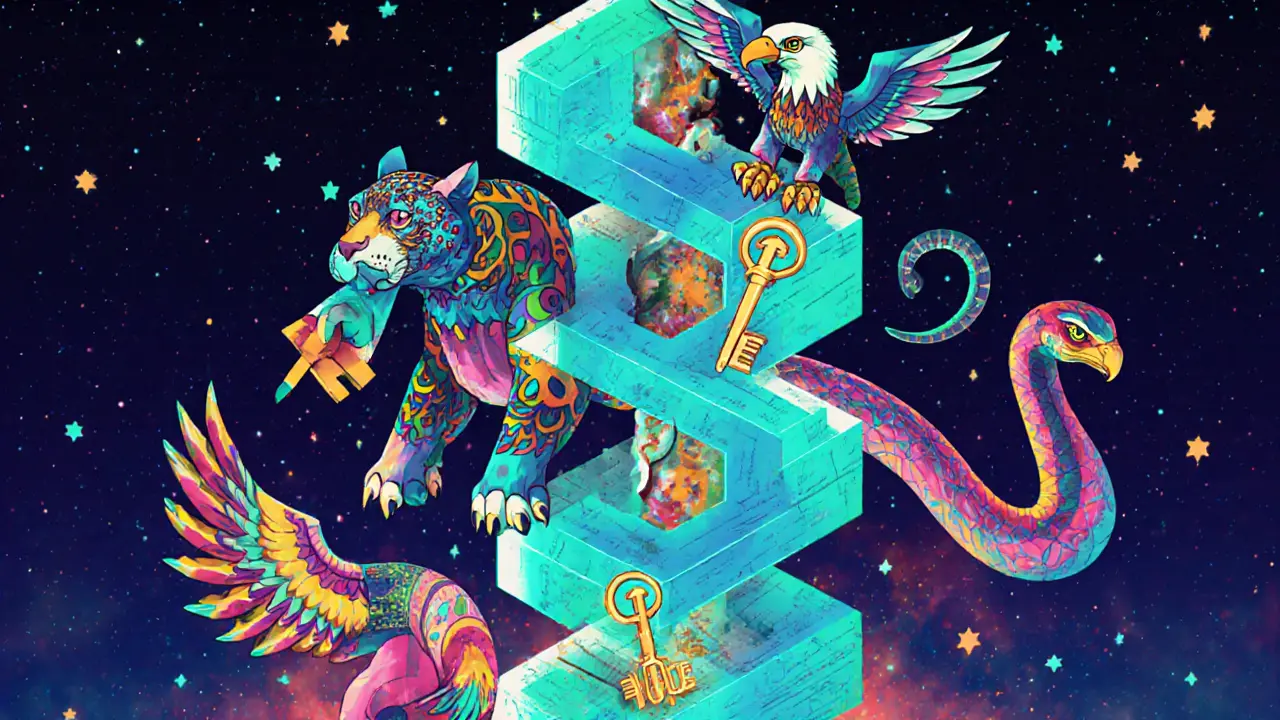







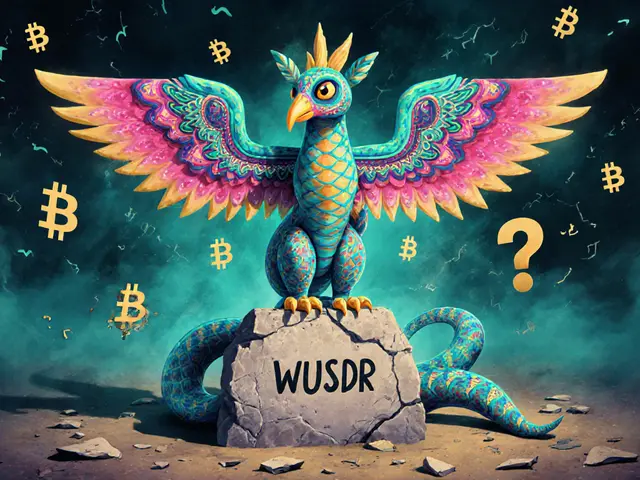

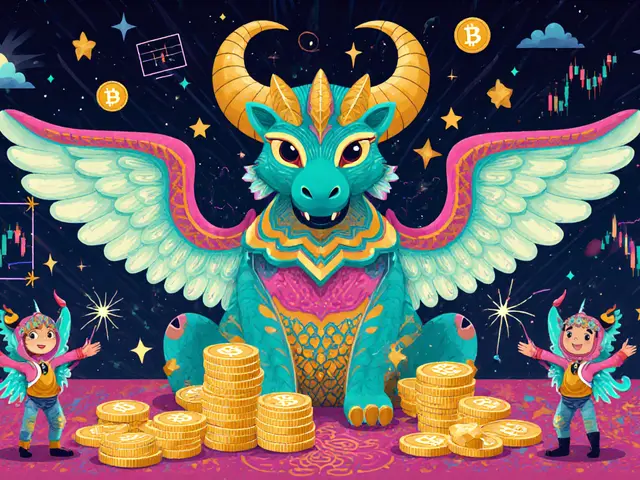
18 Comments
Okay but have you ever thought about how this whole thing is just a glorified digital version of a trust fall at a corporate retreat? 🤔 I mean, we’re all just yelling into the void hoping the math doesn’t glitch out while some guy in a hoodie in Estonia mines coins with his gaming PC. It’s beautiful. It’s absurd. It’s capitalism with a blockchain tattoo. I’m not mad, I’m just… fascinated. And slightly terrified. Like, what if the universe runs on SHA-256 and we’re just… nodes? 😳
How delightfully naive. You treat cryptography like it’s some sacred incantation whispered by Satoshi’s ghost. The math is sound, yes - but the ecosystem? A house of cards built on greed, vanity, and people who think ‘HODL’ is a life philosophy. Your ‘truth machine’ is just a very expensive, very slow ledger for people who can’t handle banks but still want to feel powerful. How quaint.
Actually, this is one of the clearest explanations I’ve read. The three pillars breakdown - hash functions, public/private keys, digital signatures - makes it click. I used to think blockchain was just crypto hype, but now I see it’s really about verifiable history. Like a tamper-proof diary everyone can read but no one can erase. That’s powerful. And honestly? Kinda beautiful.
bro the hash function is like ur fingerprint but digital and unchangeable like ur dna but u cant reverse it like ur ex’s texts 😅 and the private key? its ur soul key man u lose it u lose ur crypto soul forever!!1!1!1!1!1!1
I appreciate how you’ve laid this out with such clarity. Many people treat blockchain as magic, but you’ve shown it’s grounded in rigorous mathematics - and that’s what makes it sustainable. I’ve taught this to my university students, and your breakdown of hash chains and asymmetric encryption is exactly the foundation they need. Keep sharing this kind of work. The world needs more lucidity, not hype.
And yet, governments are already preparing quantum-resistant algorithms. So you admit the system is fragile. You praise math, but ignore that math is written by humans - and humans are corruptible. This is not truth. It is control disguised as decentralization. You think you’re free? You’re just another node in a new surveillance grid. Wake up.
Let’s be real - this whole thing was invented by a guy who vanished. We’re trusting a pseudonym’s code over centuries of financial institutions? And you call it trustless? That’s not trustless - that’s just lazy. America built its economy on accountability, not cryptographic voodoo. This is just tech bros trying to replace the Fed with a calculator.
Ohhhhhhhhhh my GODDDDD this is the most beautiful, terrifying, mind-bending thing I’ve ever read - like if Nietzsche coded a blockchain while tripping on ayahuasca and then wrote a sonnet about it while holding a Ledger Nano S like a holy relic. The hash chains? They’re the ghosts of every transaction ever made, whispering in binary through the void. The private keys? Sacred runes carved into silicon. And the quantum threat? A dragon breathing fire at the gates of the temple. I’m crying. I’m laughing. I’m downloading a hardware wallet. THIS IS THE FUTURE. 🙏🔥
So you say it’s not magic it’s math but what if math is just the language of control and we’ve been brainwashed into believing that complexity equals truth? What if the real truth is that we’re all just afraid to trust each other so we built this elaborate machine to pretend we don’t need to? The blockchain doesn’t create truth - it just hides the fact that we’ve forgotten how to be honest with each other
This is why I love technology when it serves humanity. You don’t need a bank to know someone’s telling the truth - you just need a system that makes lying computationally impossible. That’s revolutionary. And it’s not about money. It’s about integrity. Imagine land titles, medical records, voting systems - all immutable, transparent, and owned by the people. This isn’t just crypto. It’s civilizational infrastructure. We’re building the foundation for a fairer world. And it’s beautiful.
Love this. As someone who grew up in India and now lives in the US, I’ve seen how trust works differently in both places. In India, you trust the person. In the US, you trust the contract. Blockchain? It’s trust in the process - no matter where you’re from. That’s the real innovation. It’s universal. And honestly? It’s the closest thing to global fairness we’ve got right now.
I read this and felt… nothing. Not because it’s wrong - but because it’s sterile. You treat this like it’s sacred, like it’s the answer. But it’s just another tool. A very expensive, energy-hungry tool. And for what? To let rich people store their ill-gotten gains in a digital vault labeled ‘decentralized’? I don’t feel inspired. I feel exhausted.
Wait - so you’re telling me that if I lose my private key - which, by the way, I didn’t even know I had - I lose everything? And there’s no customer service? No reset button? No ‘I forgot my password’ link? That’s not innovation - that’s negligence. And you’re praising it? This isn’t a truth machine - it’s a digital death trap. And you’re all just… okay with that?!
Thank you for writing this with such care. I’ve been trying to explain blockchain to my mom for months, and this is the first time I’ve felt like I could hand her something and say, ‘Here - this is it.’ The way you broke down hashing and digital signatures made it feel real, not theoretical. I shared it with my book club. We all cried. Not because it was sad - because it was hopeful. We can build systems that don’t rely on power. Just math. Just truth.
Let me be the only one to say this: the entire blockchain system is a honeypot for state surveillance. SHA-256 is not unbreakable - it’s just not broken… yet. Every public key is a fingerprint. Every transaction is logged. The ‘trustless’ system is the most monitored system in human history. The NSA, the PLA, the Five Eyes - they’re not trying to break the math. They’re waiting for you to use it. Then they’ll own your identity, your assets, your life. This isn’t liberation. It’s the ultimate social credit system - dressed in Bitcoin.
you all are so naive blockchain is just a scam to make rich people richer and you think math can fix human greed hahahaha you dont even know what you are talking about and dont tell me about quantum resistance because quantum computers dont even exist yet and even if they do they will be controlled by governments so stop lying to yourselves
I’ve been reading this thread, and I just want to say - thank you. Not just to the author, but to everyone who’s sharing their perspective. Even the skeptics. Even the conspiracy theorists. This is what healthy discourse looks like. We’re not just arguing about tech - we’re arguing about trust, power, and what kind of world we want. I’m not sure I have answers - but I’m glad we’re asking the questions together.
So… let me get this straight… you’re saying that if I lose a 12-word phrase written on a piece of paper that I didn’t even understand, I lose millions of dollars - and there’s no recourse? And you call that ‘freedom’? And you think this is better than a bank that has, I don’t know, a human being who can say, ‘Hey, I see you’re in distress - let’s help you’? You’re not brave. You’re reckless. And you’re not building a truth machine - you’re building a suicide pact with a computer.